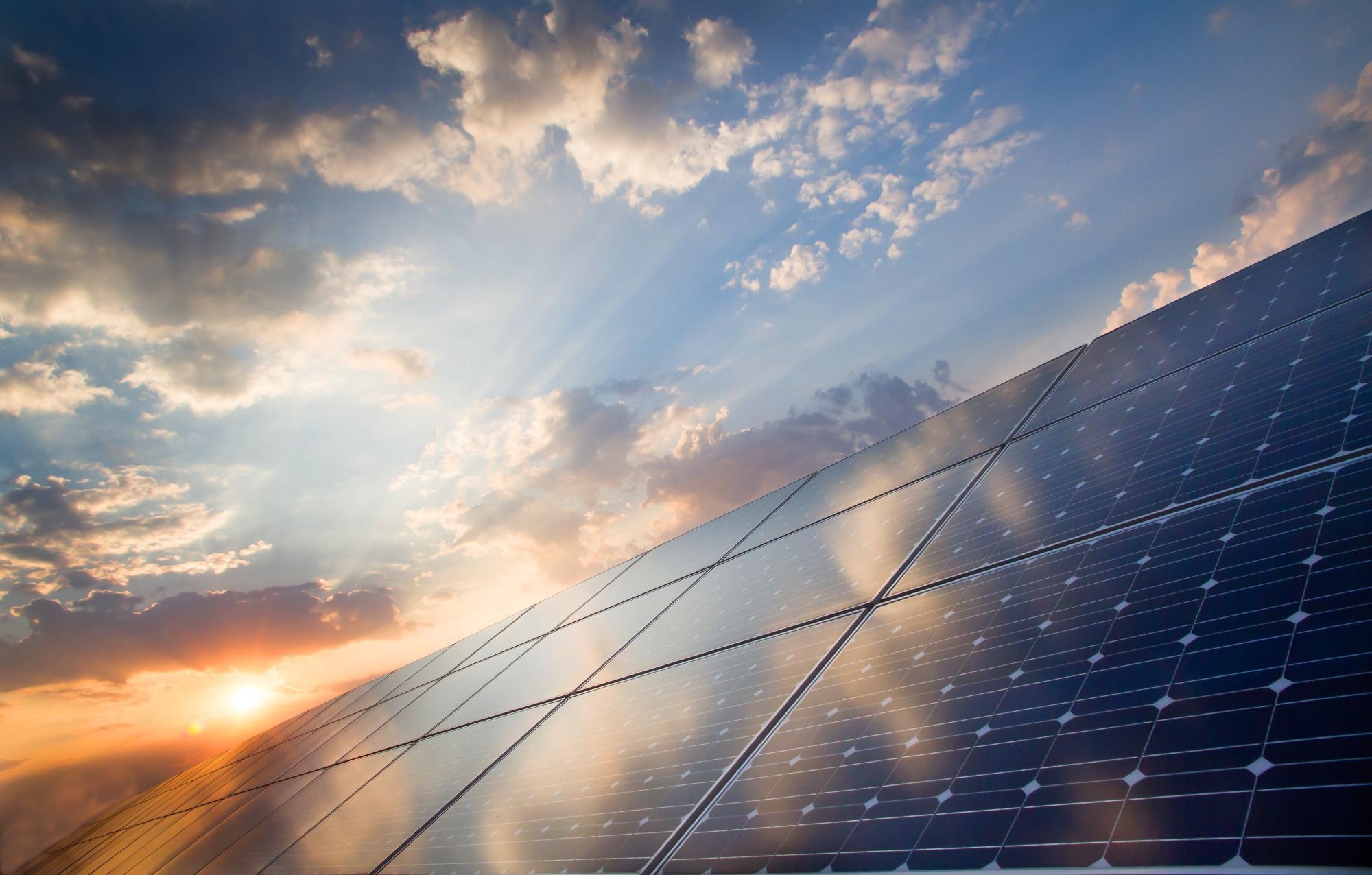Nowadays, sustainability and the climate crisis are two of the most frequently used terms in science and the media. Thus, making sustainable renewable energy technology that will mitigate the climate emergency is one of the main focuses of researchers working on solutions.

Image Credit: Shutterstock.com/foxbat
As there are various technologies that can supply renewable energy, including wind, geothermal, biomass, and solar power, overcoming sustainability issues in the development of these energy sources is crucial.
Now, a team of researchers has developed a tandem solar cell that is extremely efficient and made up of perovskite and organic absorbers, which can be manufactured at costs lower than traditional silicon-based solar cells.
Based at several key institutions in Germany, the researchers, led by Professor Dr. Thomas Riedl’s department at the University of Wuppertal, in close collaboration with researchers from the Institute of Physical Chemistry at the University of Cologne as well as partners from Potsdam and Tübingen universities, anticipate that this technology could pave the way to accessible, sustainable solar power.
The team was also joined by additional researchers based at the Helmholtz-Zentrum Berlin and the Max-Planck-Institut für Eisenforschng in Düsseldorf.
Traditionally, solar cells use silicon-based semiconductor technology and have been accepted as the peak of the technology. Yet, as they are at their peak, this severely limits the next steps that can be taken to generate even more efficient and environmentally friendly renewable energy, such as collecting even more watts of solar power per watt of solar radiation.
Organic Perovskite Cells
Therefore, finding new materials and methods to make the technology even better and improve energy efficiency, storage and production is imperative in today’s current energy climate.
One of the key terms often found in reports and panels is the energy transition which is the move from fossil-based fuels to renewable, greener energy sources. To contribute to this transition, the Germany-based researchers applied the use of organic materials and carbon-based compounds that have the ability to conduct electricity, given the right circumstances.
Two of the absorber materials were put together in a unique pairing for the purpose of this study. Combining the alternative organic semiconductors with a lead-halogen compound-based perovskite, the new multijunction solar cell demonstrated superb semiconducting properties.
Additionally, the technology requires considerably less material and energy for its manufacture in comparison to traditional silicon-based cells, which is what boosts the sustainability factor of this new type of solar cell.
Moreover, the team was able to increase efficiency from 20% (the previous efficiency of leading organic/perovskite cells) to 24%, which is a giant leap given the circumstances.
To achieve such high efficiency, the losses at the interfaces between the materials within the solar cells had to be minimized.
Dr. Selina Olthof, University of Cologne’s Institute of Physical Chemistry
In an attempt to overcome this challenge, ‘the group in Wuppertal developed a so-called interconnect that couples the organic sub-cell and the perovskite sub-cell electronically and optically,’ Dr. Olthof continued.
Future Research Possibilities
The system works by converting the sunlight absorbed into the cells by drawing in the spectral components and converting as much of it as possible into viable electricity. This is made possible using ‘tandem cells,’ in which various semiconductors with the capability to absorb the many different wavelengths of the solar cell are amalgamated inside the cell itself.
The team used organic semiconductors for visible and ultralight parts of the spectrum, while the perovskite has the capability to absorb near-infrared (NIR) light with great efficiency.
While a number of similar pairings of materials have previously been intensively studied, the Wuppertal-led team has demonstrated significant success in improving solar cell performance.
The devices established by this research team have shown to be the most efficient monolithic perovskite–organic tandem cells achieved thus far, yielding excellent stability with no signs of degradation when kept in inert atmospheric conditions.
Drawing from the success of the study outlined above, the next steps for this research team include building upon the research of this study and using it to find a way in which to increase the efficiency of solar cells even more.
In fact, the team believes that in the future, they will be able to achieve solar cells with over 30% efficiency using this method and a combination of materials. This would certainly open the door to making solar energy even more sustainable.
References and Further Reading
Brinkmann, K., et al., (2022) Perovskite–organic tandem solar cells with indium oxide interconnect. Nature, [online] 604(7905), pp.280-286. Available at: https://www.nature.com/articles/s41586-022-04455-0
Portal.uni-koeln.de. (2022) Energy transition: new-generation solar cells raise efficiency. [online] Available at: https://portal.uni-koeln.de/en/universitaet/aktuell/press-releases/single-news/energy-transition-new-generation-solar-cells-raise-efficiency
Disclaimer: The views expressed here are those of the author expressed in their private capacity and do not necessarily represent the views of AZoM.com Limited T/A AZoNetwork the owner and operator of this website. This disclaimer forms part of the Terms and conditions of use of this website.